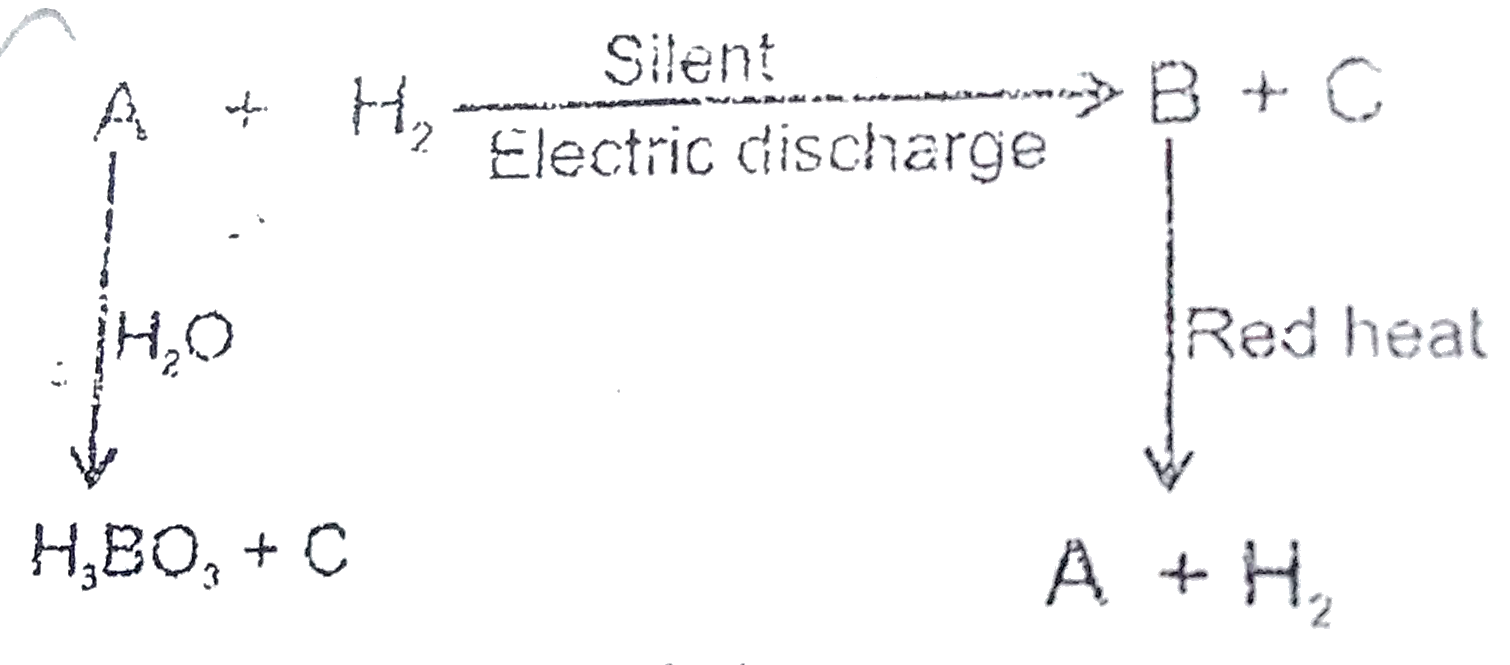Ethylene cghloride and ethylidene chloride are isomers. Identify the correct statements.
Both the compounds form same product on treatment wih alcoholic KOH
Both the compounds form same product on treatment with aq. NaOH
Both the compounds form same product on reduction
Both the compounds are optically active
The correct Answer is:A, C
To solve the question regarding the isomers ethylene chloride and ethylidene chloride, we will analyze the statements provided and determine which ones are correct based on their chemical behavior.
1. Identify the Structures of the Compounds:
- Ethylene Chloride (1,2-Dichloroethane): This compound has the structure CH2Cl-CH2Cl, where both chlorine atoms are attached to adjacent carbon atoms.
- Ethylidene Chloride (1,1-Dichloroethane): This compound has the structure CH3-CCl2, where both chlorine atoms are attached to the same carbon atom.
2. Analyze Statement A:
- Statement A: Both compounds form the same product on treatment with alcoholic KOH.
- Reaction: Both compounds undergo dehydrohalogenation with alcoholic KOH, resulting in the formation of ethyne (C2H2) by the elimination of HCl.
- Conclusion: This statement is correct.
3. Analyze Statement B:
- Statement B: Both compounds form the same product on treatment with aqueous NaOH.
- Reaction:
- Ethylene chloride reacts with aqueous NaOH to form ethylene glycol (HO-CH2-CH2-OH).
- Ethylidene chloride reacts with aqueous NaOH to form ethanol (CH3-CH2-OH).
- Conclusion: This statement is incorrect because the products are different.
4. Analyze Statement C:
- Statement C: Both compounds form the same product on reduction.
- Reaction: Reducing both compounds will replace Cl atoms with H atoms, leading to the formation of ethane (C2H6).
- Conclusion: This statement is correct.
5. Analyze Statement D:
- Statement D: Both compounds are optically active.
- Chirality Check:
- Ethylene chloride has no chiral centers (two Cl atoms on adjacent carbons).
- Ethylidene chloride also lacks a chiral center (two Cl atoms on the same carbon).
- Conclusion: This statement is incorrect as both compounds are optically inactive.
Final Conclusion:
The correct statements are:
- A: Both compounds form the same product on treatment with alcoholic KOH.
- C: Both compounds form the same product on reduction.
- Ethylene Chloride (1,2-Dichloroethane): This compound has the structure CH2Cl-CH2Cl, where both chlorine atoms are attached to adjacent carbon atoms.
- Ethylidene Chloride (1,1-Dichloroethane): This compound has the structure CH3-CCl2, where both chlorine atoms are attached to the same carbon atom.
- Statement A: Both compounds form the same product on treatment with alcoholic KOH.
- Reaction: Both compounds undergo dehydrohalogenation with alcoholic KOH, resulting in the formation of ethyne (C2H2) by the elimination of HCl.
- Conclusion: This statement is correct.
- Statement B: Both compounds form the same product on treatment with aqueous NaOH.
- Reaction:
- Ethylene chloride reacts with aqueous NaOH to form ethylene glycol (HO-CH2-CH2-OH).
- Ethylidene chloride reacts with aqueous NaOH to form ethanol (CH3-CH2-OH).
- Conclusion: This statement is incorrect because the products are different.
- Statement C: Both compounds form the same product on reduction.
- Reaction: Reducing both compounds will replace Cl atoms with H atoms, leading to the formation of ethane (C2H6).
- Conclusion: This statement is correct.
- Statement D: Both compounds are optically active.
- Chirality Check:
- Ethylene chloride has no chiral centers (two Cl atoms on adjacent carbons).
- Ethylidene chloride also lacks a chiral center (two Cl atoms on the same carbon).
- Conclusion: This statement is incorrect as both compounds are optically inactive.
The correct statements are:
- A: Both compounds form the same product on treatment with alcoholic KOH.
- C: Both compounds form the same product on reduction.
Topper's Solved these Questions
- HALOALKANES AND HALOARENESBOOK - NCERT EXEMPLAR ENGLISHCHAPTER - HALOALKANES AND HALOARENESEXERCISE - Short Answer Type Questions
35 Videos
- HALOALKANES AND HALOARENESBOOK - NCERT EXEMPLAR ENGLISHCHAPTER - HALOALKANES AND HALOARENESEXERCISE - Match Type Questions
6 Videos
- HALOALKANES AND HALOARENESBOOK - NCERT EXEMPLAR ENGLISHCHAPTER - HALOALKANES AND HALOARENESEXERCISE - Long Answer Type Questions
3 Videos
- GENERAL PRINCIPLE AND PROCESSES OF ISOLATION OF ELEMENTS BOOK - NCERT EXEMPLAR ENGLISHCHAPTER - GENERAL PRINCIPLE AND PROCESSES OF ISOLATION OF ELEMENTS EXERCISE - Long Answer Type Questions
1 Videos
- P-BLOCK ELEMENTSBOOK - NCERT EXEMPLAR ENGLISHCHAPTER - P-BLOCK ELEMENTSEXERCISE - Long Answer Type Questions
3 Videos
Similar Questions
Identify the correct statement(s)
View SolutionIdentify the correct statement(s):
View SolutionIdentify the correct statement(s):
View SolutionIdentify the correct statement(s).
View SolutionIdentify the correct statement (s)
View SolutionIdentify th correct statement(s):
View Solutionidentify the correct statement(s):
View SolutionIdentify the correct statements (s):
View SolutionIdentify the correct the statement
View Solution
Identify correct statement.
View Solution
